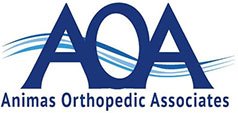Platelet-Rich Plasma (PRP) Injection
Platelet-Rich Plasma (PRP) is a nonsurgical orthobiologic regenerative medicine treatment option that shows excellent results in treating multiple orthopedic complaints. It can easily be performed in the office and requires little downtime. As expected from an orthobiologic, research supports that PRP often offers superior results compared to steroid or viscosupplementation treatment options, improving both pain and function to a greater extent or for longer periods of time.
- What is Platelet-Rich Plasma (PRP)?
- Conditions Treated
- The Injection Procedure
- What to Expect
What is Platelet-Rich Plasma?
Platelet-Rich Plasma (PRP) is blood plasma with concentrated platelets. The concentrated platelets found in PRP contain huge reservoirs of bioactive proteins, including growth factors, that are vital to initiate and accelerate tissue repair and regeneration. PRP is created from your own blood, and offers the ability to harness your own body’s healing response in order to decrease pain.
Not all PRP is created equal. Research clearly supports that the concentration of PRP is critical to outcomes. At Animas Orthopedic Associates, we use the Emcyte PRP system in order to maximize concentration and results.
Conditions Treated
- Knee osteoarthritis
- Hip osteoarthritis
- Shoulder (glenohumeral) osteoarthritis
- Rotator Cuff Tendinitis
- Partial Thickness Rotator Cuff Tears
- Patellar tendinopathy
- Meniscal Injury
- Lateral epicondylitis (tennis elbow)
- Medial epicondylitis (golfer’s elbow)
- Plantar Fasciitis
The Injection Procedure
During a PRP treatment, a small amount of blood is first drawn from the patient’s arm. The blood is then centrifuged to separate out the red blood cells and white cells in order to concentrate the platelets to a therapeutic level.
The injection is then performed under direct visualization using ultrasound or fluoroscopy guidance. Local anesthetic may be used prior to the injection. In most cases, the procedure takes about 45 to 60 minutes. Your clinician will then provide you with post procedure instructions.
What To Expect
Pre-Treatment- Avoid using NSAIDS (Ibuprofen, Aspirin, Naproxen, Aleve, Motrin, or Advil) for 10 days prior to your PRP procedure
- Avoid receiving any steroid injections at the proposed treatment site for at least 2 months prior to your PRP procedure
- A small amount of blood (generally around 60 ml) will be collected from your arm.
- That blood will be centrifuged in order to concentrate the platelets to a therapeutic level.
- During the injection, you may experience mild pain or pressure at the injection site and in the surrounding area.
- You may resume normal light activities within 24 hours
- Restricted weight bearing may apply to hips and knees depending on your treatment area
- You may experience mild pain or soreness that generally lasts 1-4 days.
- Avoid using ice on the treatment area. Heat is okay.
- Avoid NSAIDS for 6-8 weeks. Tylenol is okay.
- Depending on your treatment location, formal rehabilitation (physical therapy) may be recommended.










